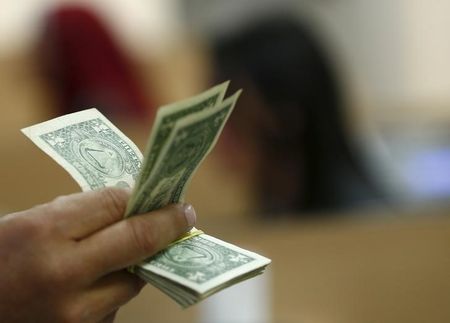Forex
Dollar largely unchanged ahead of CPI release; 2024 gains intact


© Reuters.
Investing.com – The U.S. dollar steadied in early European trade Thursday, retaining most of 2024’s gains ahead of the release of key U.S. inflation data that could provide more clues on when the Federal Reserve could begin cutting interest rates.
At 04:20 ET (09:20 GMT), the Dollar Index, which tracks the greenback against a basket of six other currencies, traded flat at 102.090, but still 1% higher since the start of January.
U.S. CPI looms large
The dollar has been in demand for much of the new year as traders scaled back bets of early interest rate cuts by the .
However, the futures market indicates that around 140 basis points of cuts this year are still priced in, with around a two-thirds chance they will begin as soon as March.
The release later in the session of the December U.S. CPI is likely to drive sentiment until the Fed’s next policy-setting meeting at the end of the month.
The is expected to rise 0.2% on the month, an annual rise of 3.2%, just up from 3.1% the prior month. However, the figure, which excludes volatile food and energy prices, is expected to fall to 3.8% on an annual basis, the lowest since mid-2021.
“While we may not see a big jump in the dollar on a consensus CPI print (actually there are some downside risks given part of the market is possibly positioned for a strong number), we suspect the combination of only modest core inflation declines and lingering labour tightness will prompt the Fed to push back on rate cuts more forcefully,” said analysts at ING, in a note.
Euro balances Spanish and Italian data
In Europe, traded largely unchanged at 1.0974, helped by data showing that rose 0.8% on an annual basis in November, rebounding from a revised 1.4% drop the prior month.
By contrast, the equivalent data showed a slump of 1.5% on the month in November, far weaker than the expected drop of 0.2%, as the eurozone as a whole struggles to post any form of growth.
“Soft indicators point to an economic contraction in December too, confirming the possibility of a technical recession in the second half of 2023 and weak prospects for the near term,” ECB Vice President Luis de Guindos said, on Wednesday.
rose 0.1% to 1.2756, with sterling boosted by Bank of England Governor declining to comment on potential rate cuts, as he testified before the Treasury select committee on Wednesday.
“Price stability and inflation being a target is consistent with and supportive of financial stability. So it is important from a financial stability view that obviously we return inflation to target,” Bailey said.
Yen close to one-month low
Elsewhere, traded 0.1% lower to 145.53, as the yen hovered near a one-month low, seeing fresh weakness on growing conviction that the Bank of Japan will delay a pivot away from its ultra-dovish policy.
fell 0.1% to 7.1628, with the yuan recovering slightly from a weak start to 2024. Sentiment towards China remained weak amid a sluggish economic rebound, with inflation and trade data due on Friday expected to show little improvement.

 Forex3 years ago
Forex3 years agoForex Today: the dollar is gaining strength amid gloomy sentiment at the start of the Fed’s week

 Forex3 years ago
Forex3 years agoUnbiased review of Pocket Option broker

 Forex3 years ago
Forex3 years agoDollar to pound sterling exchange rate today: Pound plummeted to its lowest since 1985

 Forex3 years ago
Forex3 years agoHow is the Australian dollar doing today?

 Cryptocurrency3 years ago
Cryptocurrency3 years agoWhat happened in the crypto market – current events today

 World3 years ago
World3 years agoWhy are modern video games an art form?

 Commodities3 years ago
Commodities3 years agoCopper continues to fall in price on expectations of lower demand in China

 Economy3 years ago
Economy3 years agoCrude oil tankers double in price due to EU anti-Russian sanctions





















